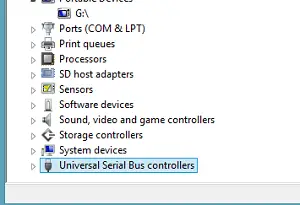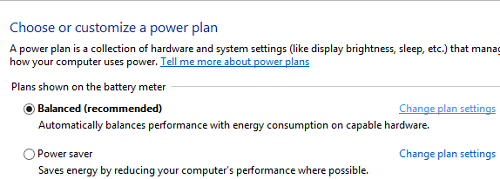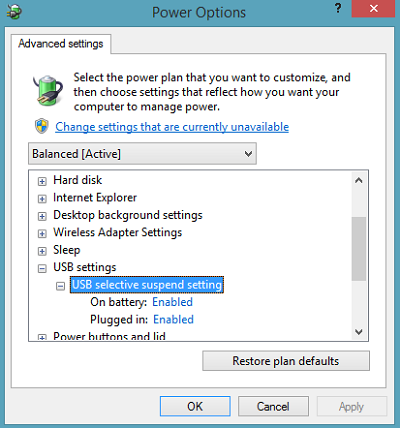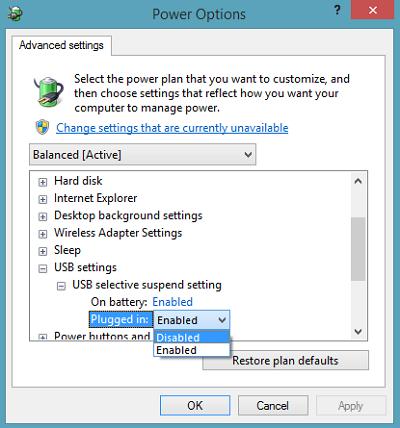Some Windows 11/10 users have run into this problem. After connecting an external hard drive to a USB 3 Port, they have found that the computer does not read it. The drive is not recognized by the OS and is no more visible in Windows Explorer. Possibly, the reasons could be due to issues with the USB drivers installed on the computer.
So, in the first place check the type of error message you are getting. Second, run the Hardware and Device Troubleshooter or the Windows USB Troubleshooter and check if it helps. The automated tools check the hardware/USB connected to the computer for any known issues and fix them automatically.
Next, you want to check for any pending updates under Windows Update. Some of the updates might be related to the drivers and therefore needs to be installed on the computer. So check if you need to update your drivers. Visit the related website and search for the latest drivers available for the hard disk model and install it on the computer and check if that resolves the issue.
USB 3.0 External Hard Drive not recognized
If Windows 11/10 does not recognize your USB 3.0 External Hard Drive, here are suggestions you can try:
- Uninstall & reconnect the external hard drive
- Reinstall USB controllers
- Disable USB selective suspend setting
Let us look at the suggestions in detail.
1] Uninstall & reconnect the external hard drive
To do this, type ‘Device Manager’ in the Start Search box click the icon.
Next, select Disk Drives from the list of hardware, right-click the USB external hard drive with the issue and click Uninstall.
Following the uninstall, unplug the USB cable. Then, wait for a minute and reconnect the USB cable. The driver should automatically load.
Look for the USB drive in Windows Explorer.
Read: Fix USB 3.0 slow transfer speed.
2] Reinstall USB controllers
The method works if there is a problem with the loaded USB driver i.e. it has either become unstable or corrupted.
Open Device Manager and expand Universal Serial Bus controllers.

Then, right-click a device and click Uninstall. Repeat the same procedure for all devices.
Once done, restart the computer. Your USB controllers should automatically install.
3] Disable USB selective suspend setting
Click the battery icon visible on the taskbar of your computer screen. Adjacent to your currently selected plan, you should find ‘Change Plan Settings’ link. Click the link.

Next, choose ‘Change advanced power settings’ option.
Then, click the box to expand the USB Settings. Expand USB selective suspend settings.

Click the link adjacent to Plugged in option, then from the drop-down menu select Disabled option.

If you’re using a laptop, click Battery, then click the drop-down menu and select Disabled.
Click Apply, then click OK.
Make sure you create a system restore point first. Also, remember to restore your old setting back, if you find that some suggestion has not helped you.
Check this post if you receive the USB Device Not Recognized pop-up often and this one if Windows 11/10 does not recognize the second Hard Drive.
These posts may also interest you:
- How to identify USB 3.0 Port on Laptop
- USB Devices not working in Windows
- External Hard Drive not showing up.
I hope something helps you!